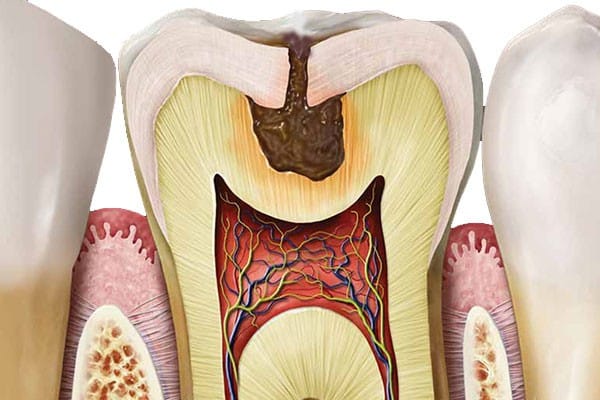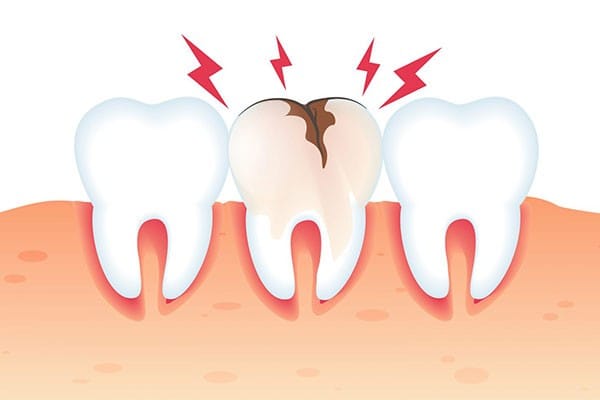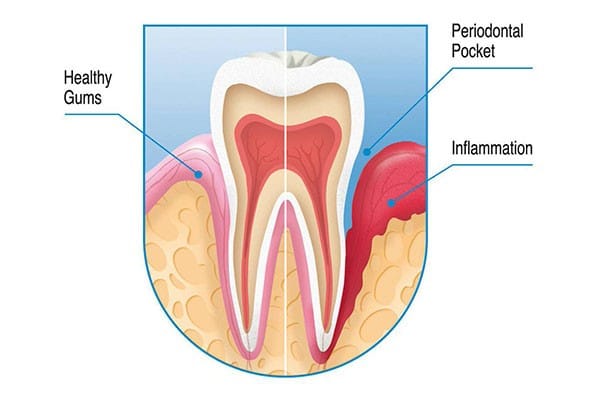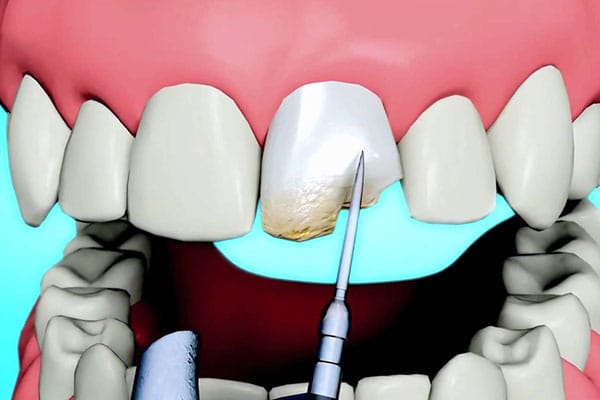6 SYMPTOMS THAT INDICATES YOU NEED ROOT CANAL TREATMENT
A root canal is a procedure carried out to save and repair a badly damaged or infected tooth instead of extracting it. In this procedure, the dentist makes a small hole or an incision in the infected tooth and removes its innermost layer, the pulp, which consists of various nerve endings and blood vessels.
Root canal treatment deadens the tooth and effectively eliminates the discomfort the patients have felt. Root canal treatment is required when a tooth shows signs of infection or significant pulpal nerve damage.
When the tooth is chipped or cracked and has a significant cavity, bacteria enter the pulp, and if left untreated. It can lead to oral issues like infection, bone loss, or in severe cases the loss of the entire tooth.
There are multiple benefits of root canal treatment, including:
- Prevents tooth loss.
- Prevents infection of adjacent teeth.
- Restores the aesthetics of teeth.
- Prevents jawbone degeneration.
- Boosts oral and overall health.
- It is virtually painless.
The most common symptoms that indicate that a person might need a root canal treatment are as follows:
1. PROLONGED PAIN:
The most obvious symptoms that indicate a patient needs to undergo a root canal procedure are prolonged sensitivity and pain in the affected tooth. However, if a person’s tooth has been cracked or broken, the decomposition of the tooth might also have a similar effect.
If it hurts when pressure is put against your tooth, or sensitivity lasts for weeks or months without any improvement, a root canal might be the only solution. Prolonged tooth sensitivity is usually a result of the damaged root, and it cannot heal on its own.
2. DEEP DECAY:
If a cavity has been neglected for a prolonged period, it will spread down into the nerve and the root of the tooth. Once deep decay has occurred in the base of the tooth, no amount of brushing or flossing can solve this problem.
In such cases, a root canal is the only option to repair the infected tooth. This is why regular oral hygiene and dental appointments hold great significance.
When your teeth and gums are neglected, infections will spread to other oral structures, and such problems require complicated solutions.
3. SENSITIVITY TO HEAT OR COLD:
Another common symptom that shows a person might need a root canal is tooth sensitivity. If you feel a dull ache that progresses into a sharp, intense pain, while consuming hot and cold food items such as ice cream, coffee or tea.
You might have infected and damaged tooth roots. In such cases, the dentist usually concludes that a root canal is the only option left in order to fix this problem.
4. GUM AREA IS SWOLLEN:
The presence of swollen gums is also a common symptom which indicates the presence of problems beneath the tooth surface. If your gums feel painful and swollen or have a raised bump, your dentist will thoroughly examine the swollen gums to see if inflammation is the actual cause of this problem.
In some cases, swollen gums can also indicate an early stage of infection at a tooth’s root. Swelling can also accompany inflammation. But, in most scenarios, it is a sign that shows the blood flow between a person’s jaw’s vessels and the pulp chambers of the teeth is off.
In such situations, the junctions of these veins are blocked by an infection, and the swelling gradually becomes more noticeable. A root canal procedure is generally needed to solve the problem of inflamed gums if they do not improve by other procedures.
5. CHIPPED OR CRACKED TOOTH:
Our teeth can get cracked or chipped due to being involved in sports, biting on extremely hard foods, or when previous dental procedures are not properly treated. Cracked or chipped teeth have exposed nerves beneath the surface which lead to an infection.
An untreated infection in a tooth’s root can enter and spread into the bloodstream. Therefore such infections require a root canal procedure to prevent the further spread of infection and pain.
6. PRESENCE OF PIMPLES ON THE GUMS:
The appearance of pimples on the gums can sometimes indicate leakage of infected fluids into the gums’ tissues. This can be an advanced form of infection. In such cases, the dentist might recommend root canal treatment to prevent the infection from spreading.
Infection at the roots of the teeth can also show up as gum discoloration. If there is a patch that is darker than the rest of the gums, infection near a tooth’s root might be the actual cause.
Discoloration usually occurs when there is restricted blood flow or infiltrated plaque at the pulp layer of infected teeth.
WHAT TO EXPECT DURING A ROOT CANAL PROCEDURE?
The main purpose of a root canal procedure is to treat the infection by removing the infected tooth pulp which effectively eliminates the pain and discomfort. In this procedure, the dentist generally removes the infected pulp and nerve endings of the affected tooth. This procedure is not complicated but involves various steps:
- X-ray: If a dentist suspects that a patient might need a root canal, he will initiate the treatment by taking a number of X-rays to know where the decay is located.
- Anesthesia: In this procedure, local anesthesia is administered to the affected tooth to minimize the discomfort and to make it a painless treatment procedure.
- Pulpectomy: After the administration of anesthesia, an incision is made, and the diseased tooth pulp is removed.
- Filling: The roots that have been opened are then filled with gutta-percha material and sealed off with the help of cement.
APPROXIMATE COSTS OF ROOT CANAL TREATMENT:
The estimated costs of root canal treatment usually depend on the location of the infection in the mouth. Root canals on the molars are typically more expensive as they have more canals that require filling. A root canal treatment typically costs $1000 to $1200 without insurance.
It is a procedure that helps preserve the natural tooth, so it is definitely worth the price. Preserving the natural tooth structure requires fewer dental visits and saves the expenses of various artificial dental alternatives in the long run.

















